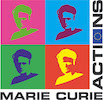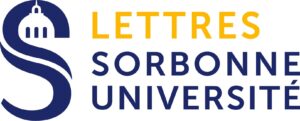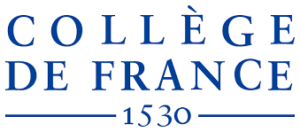L’invention des anges dans l’Antiquité tardive. Théologie et esthétique (ALATA)

 L’invention des anges dans l’Antiquité tardive. Théologie et esthétique
L’invention des anges dans l’Antiquité tardive. Théologie et esthétique
The Making of Angels in Late Antiquity. Theology and Aesthetics
Ce projet a reçu un financement de l’Union Européenne dans le cadre du programme de recherche et d’innovation Horizon 2020 à travers la convention Marie Skłodowska-Curie n°793760 (MSCA-IF-2017).
This project has received funding from the European Union’s Horizon 2020 research and innovation program under the Marie Skłodowska-Curie grant agreement n°793760 (MSCA-IF-2017).
Le projet ALATA a été réalisé du 1er septembre 2018 au 31 août 2020.
The ALATA project happened from September 1st, 2018 to August 31st, 2020.
Il a été accueilli tout d’abord au Labex RESMED (Laboratoire d’excellence Religions et sociétés dans le monde méditerranéen ANR-10-Labx-72) puis au sein de l’UMR 8167 Orient et Méditerranée.
It was implemented first in the RESMED (Laboratory of excellence Religions and societies in the Mediterranean world ANR-10-Labx-72) then in The Orient and the Mediterranean (Mixed research unit 8167).
Résumé du projet
Questionner l’invention des anges est une manière innovante d’aborder le fait religieux dans le monde méditerranéen ancien. La notion d’êtres intermédiaires est largement répandue dans la conception que l’homme se fait du divin. Cependant, ceux-ci n’ont pas toujours existé sous la forme à laquelle nous sommes habitués. Le projet ALATA se concentre sur le moment crucial de cette construction longue et complexe. Ce dernier s’observe dans l’Antiquité tardive, plus précisément aux Ve-VIe siècles de notre ère. La tradition des anges païens hérité du monde classique interagit avec divers religions et courants de pensée de tout l’Empire romain (judaïsme, gnosticisme, néoplatonisme) pour construire les définitions, les fonctions et les images des anges chrétiens qui passeront à leur tour à Byzance, et au-delà. Ce phénomène se développe principalement dans les régions orientales de l’Empire (Égypte, Syrie, Palestine). Dans les trois langues les plus pertinentes pour étudier l’évolution du concept, ange signifie « messager » (grec angelos ; copte angelos ; syriaque mal’ak). La notion est approfondie en particulier par le pseudo-Denys l’Aréopagite, théologien de l’Église orthodoxe, qui organise les créatures célestes en un système hiérarchique complet. Ce texte fondamental permet d’évaluer l’impact de l’élaboration intellectuelle sur la culture matérielle, plus spécifiquement en ce qui concerne le statut des images. Les textes, mais aussi les œuvres d’art, nous permettent par exemple de retracer la transformation des Amour païens et d’autres personnifications ailées en anges chrétiens. Comment rendre visible l’invisible ? Le problème de la représentation des anges permet de repenser la question de l’esthétique dans l’Antiquité tardive, comme un fascinant processus d’échanges, de conflits et finalement de (ré) appropriations par la période de sa propre identité.
Summary of the project
Focusing on the making of angels is an innovative way to approach the religious fact in ancient Mediterranean. The idea of intermediary beings is widely spread in the human conception of the divine; however, it did not always exist in the terms we are used to. The ALATA project aims to explore the turning point of this long and complex construction. This took place in Late Antiquity, more specifically in the V-VIth c. CE. The legacy of Pagan angels inherited from the Classical world interacts with various religions and schools of thought throughout the Roman Empire (Judaism, Gnosticism, Neo-Platonism) to build the definitions, functions and images of Christian Angels which will in turn pass onto Byzantium, and further. This phenomenon mostly rises in the Eastern regions of the Empire (Egypt, Syria, Palestine). In the three most relevant languages to study the development of the concept, Angel means “messenger” (Greek angelos; Coptic angelos; Syriac ml’k). The notion gets elaborated on, particularly by the Pseudo-Dionysius the Areopagite, theologian of the Orthodox Church, which creates a whole hierarchical system for the celestial host. This text provides the base to evaluate the impact that such an intellectual shift had on material culture, more specifically for what concerns the status of images. For instance, the texts but also the works of art allow us to trace the transformation from Pagan Cupids and other winged personifications to Christian Angels. How to make visible the invisible? The issue of representing Angels helps thinking the entire question of Aesthetics in Late Antiquity, a fascinating process of exchange, conflict and ultimately (re)appropriation by the period of its own identity.
Événements / Events
Atelier / Workshop ALATA
22.03.2019
Sorbonne Université, Paris
Colloque international / {International conference ALATA
Inventer les anges de l’Antiquité à Byzance. Conception, représentation, perception
Inventing Angels from Antiquity to Byzantium. Conception, representation, perception
19-20-21.03.2020 reporté / postponed (Covid-19)
Sorbonne Université, Paris
02-03.07.2020
Sessions en ligne / online sessions
Chaîne YouTube / YouTube channel




